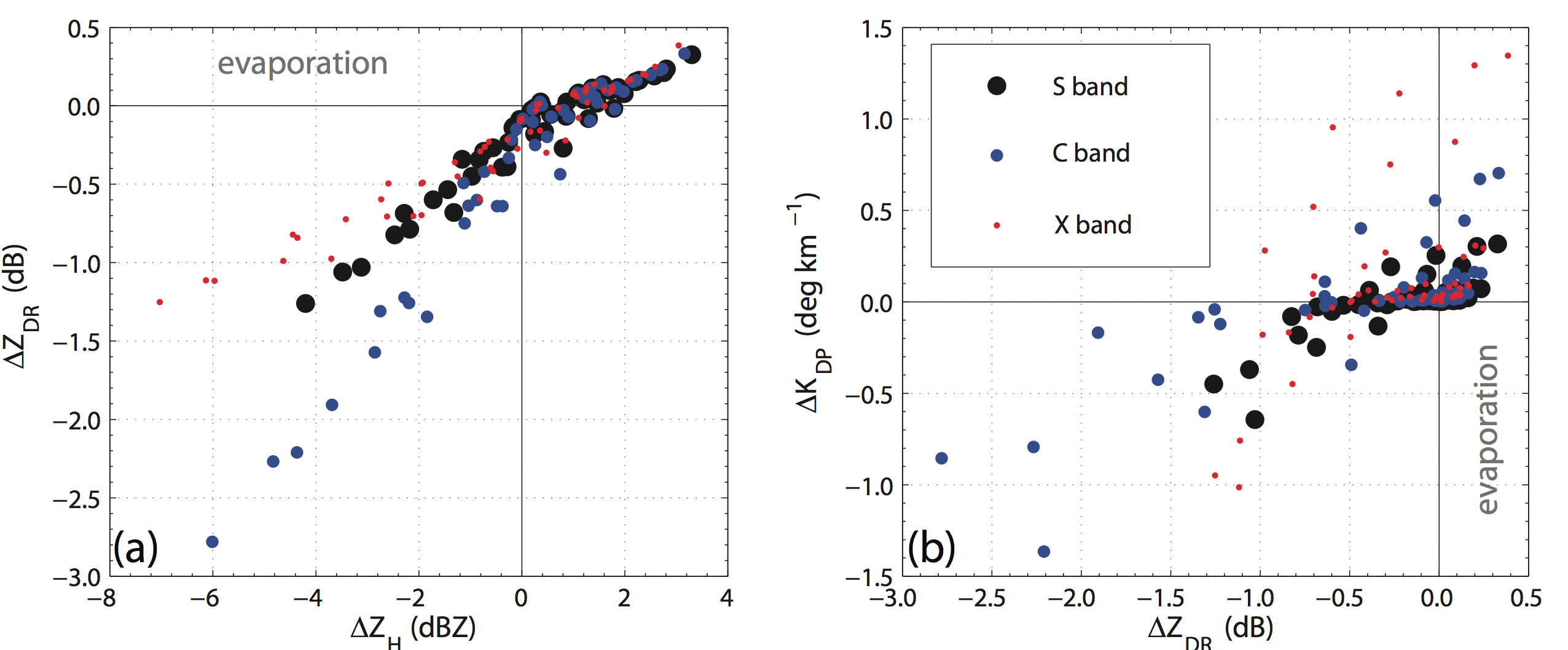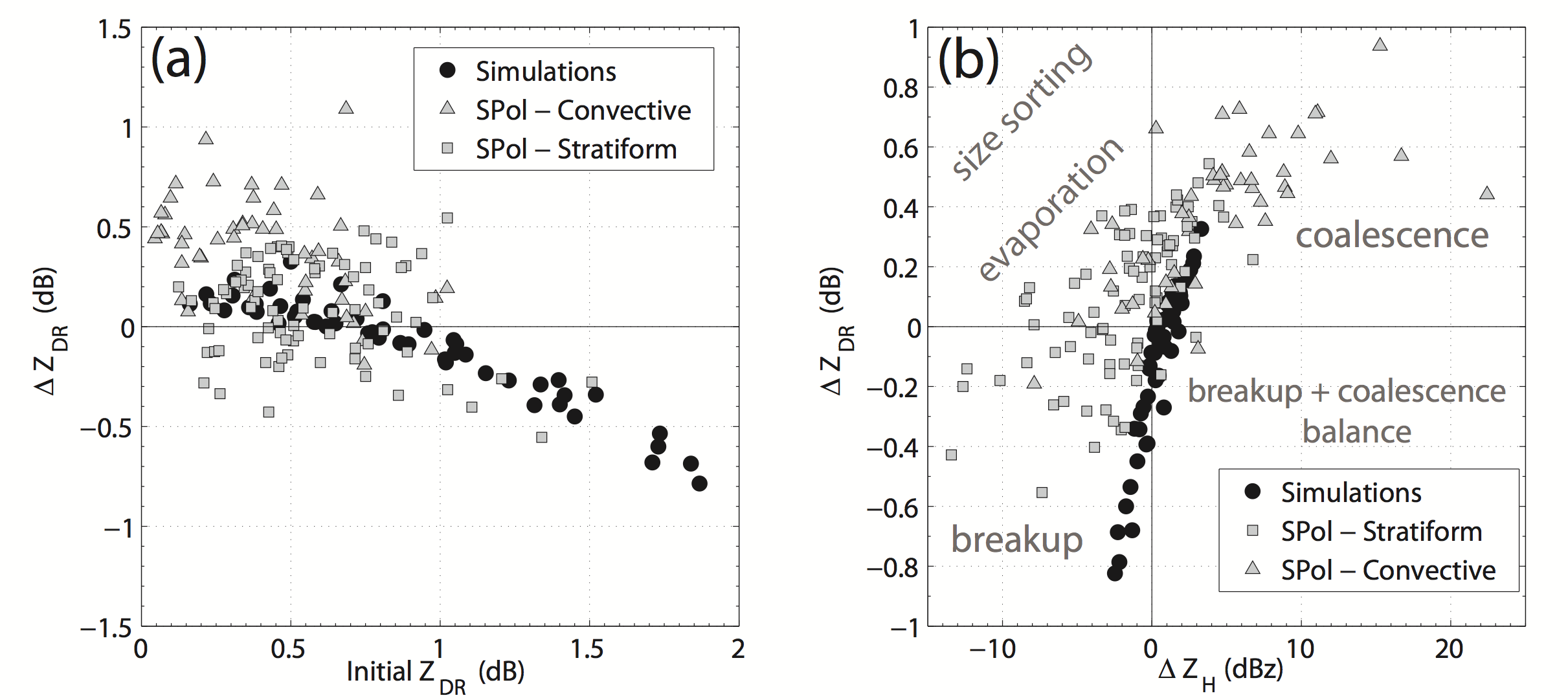Deciphering Raindrop Collisions with Dual-polarization Radar
Submitter:
Kumjian, Matthew — Pennsylvania State University
Area of research:
Cloud Processes
Journal Reference:
Science
As raindrops descend to the surface, they undergo a variety of collisions with one another. These collisions can lead to coalescence of the drops into a larger one, breakup of the colliding drops into small fragments, or can be inconsequential. These processes affect the evolution of the drop size distribution (DSD), ultimately influencing the potential evaporation rates and subsequent cold pool production. Moreover, recent modeling studies have demonstrated considerable sensitivity to the parameterization of these processes, which at the moment are somewhat ad hoc.
Dual-polarization radar observations can observe these processes through the changes they cause in the shape of the DSD. In this study, we couple an explicit, mass-conserving spectral bin microphysical model of the raindrop collisional processes with electromagnetic scattering calculations to investigate how these processes affect vertical profiles of the radar variables. These simulated results are compared to radar data from the Indian Ocean (collected during DYNAMO-AMIE) and from Oklahoma (collected during MC3E).
Impact
The microphysical fingerprints of each collisional process are quantified. As drops breakup, mass is shifted from the larger drops to smaller sizes, leading to a decrease towards the ground in the radar reflectivity factor (ZH), differential reflectivity (ZDR), and specific differential phase (KDP). Coalescence of drops represents a redistribution of mass to larger drop sizes, resulting in increases towards the ground in ZH, ZDR, and KDP. When the processes are approximately in balance, ZH and KDP can increase and ZDR can decrease. These fingerprints are distinct from the ones of raindrop evaporation and size sorting (ZH and KDP decrease but ZDR increases) found in previous studies.
Comparisons of the simulated vertical profiles of ZH and ZDR with data collected during two DOE field campaigns reveal important discrepancies. Notably, the observations consistently show larger coalescence signatures than the simulations. Further, simulated decreases in ZDR owing to drop breakup are larger in magnitude than those observed. Collectively, these observations strongly suggest that the model treatment of drop breakup is too aggressive, and/or that coalescence is not aggressive enough, even in the framework of a sophisticated bin model.
Summary
The problems with the model treatment of breakup and coalescence lead to a preponderance of smaller drop sizes, which may profoundly affect the production and maintenance of cold pools. This has direct implications for simulations of convective storm organization and life cycles, and thus requires refinements. Our data analysis suggests that dual-polarization radar observations over a wide range of rainfall rates and environments can be used to constrain model simulations. Parameterizations of these processes should produce polarimetric radar fingerprints that lie within the parameter space occupied by the observations. Discrepancies in a particular quadrant of the fingerprint diagram provide insight into the particular problematic process and how it needs to be refined. In this way, polarimetric radar observations can constrain and guide the development of more accurate treatments of the raindrop collisional processes.



